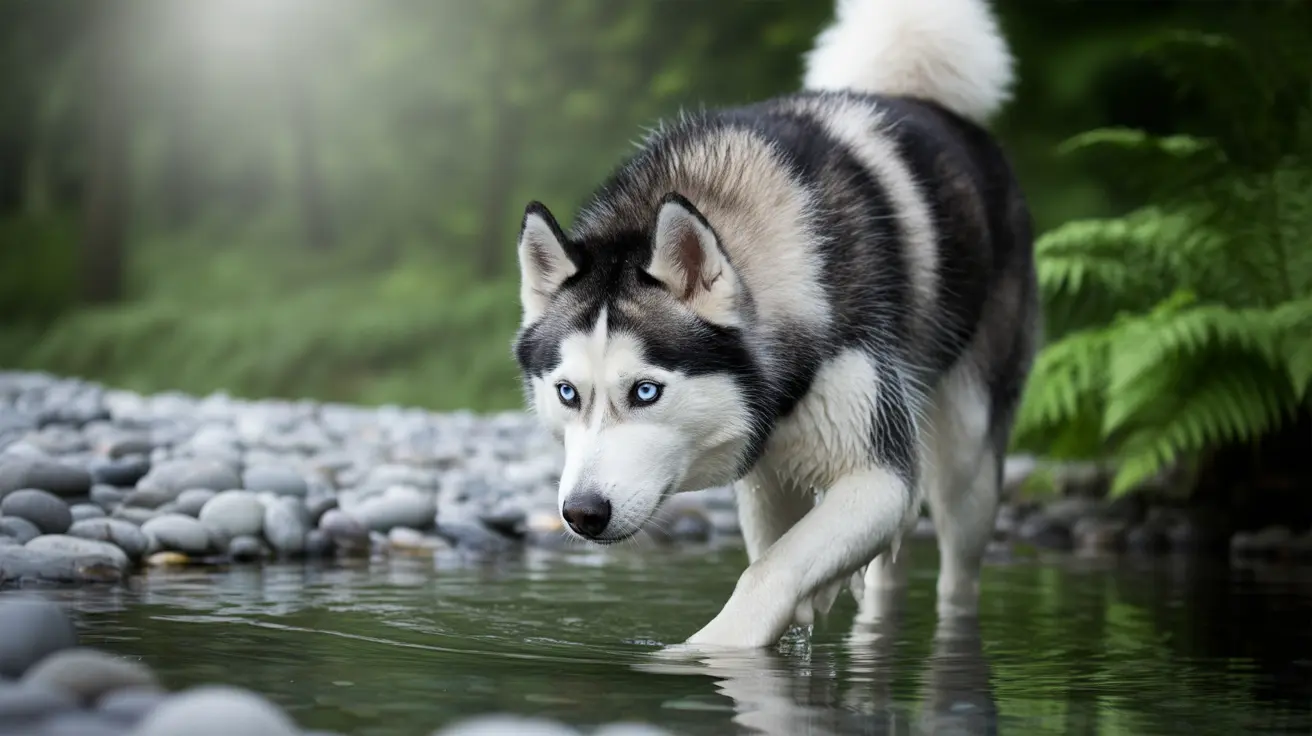When it comes to Huskies and their relationship with water, the answer isn't as straightforward as you might think. While these majestic Arctic dogs are famously associated with snow and ice, their attitudes toward water can range from absolute love to complete avoidance. Understanding why and how Huskies interact with water can help you better support your furry friend's preferences and needs.
This comprehensive guide explores the complex relationship between Huskies and water, diving into their breed history, physical characteristics, and individual personalities that influence their water preferences. Whether you're a current Husky owner or considering adding one to your family, this information will help you understand and respect your dog's unique relationship with water.
The Arctic Heritage and Water Connection
Siberian Huskies were originally bred as working dogs in the harsh Arctic climate, where their primary interaction with water came in the form of snow and ice. This breeding history has significant implications for their relationship with water:
Their thick double coat, while excellent for cold protection, becomes heavy and potentially uncomfortable when wet. This natural insulation can make swimming more challenging and might contribute to some Huskies' reluctance to enter deep water.
Unlike breeds specifically developed for water activities, such as Labrador Retrievers, Huskies weren't bred with swimming in mind. This doesn't mean they can't swim – many can and do – but it helps explain why water activities might not come as naturally to them.
Individual Personality and Water Preferences
Just like humans, each Husky has their own unique personality that influences their attitude toward water. Some common patterns emerge:
- Adventurous Huskies often show more interest in water exploration
- Cautious individuals might need more time and encouragement
- Early exposure to water typically leads to better acceptance
- Some Huskies prefer shallow water play over deep-water swimming
Physical Considerations for Water Activities
Several physical characteristics affect how Huskies interact with water:
- Double coat structure impacts buoyancy and comfort
- Muscular build requires more energy for swimming
- Natural oils in their fur can make water less appealing
- Body temperature regulation concerns in cold water
Safe Water Introduction and Training
If you're interested in helping your Husky develop a positive relationship with water, consider these important steps:
- Start with shallow water experiences
- Use positive reinforcement consistently
- Never force your Husky into the water
- Consider using a well-fitted life jacket
- Keep initial sessions short and fun
Frequently Asked Questions
Do Siberian Huskies generally enjoy swimming or playing in water?
Huskies vary widely in their water preferences. While some naturally enjoy swimming and water play, others may be more hesitant or completely uninterested. This variation is normal and depends on individual personality, early experiences, and proper introduction to water activities.
How does a Husky's thick double coat affect their comfort with water?
A Husky's double coat becomes notably heavy when wet, which can affect their swimming ability and comfort level. The coat also takes longer to dry, potentially causing discomfort and requiring extra care after water activities.
What are the best ways to introduce a Husky to water activities safely?
Start gradually with shallow water and positive experiences. Use treats and praise, begin in calm, controlled environments, and never force your Husky into the water. Consider using a life jacket for added security and confidence building.
Why do some Huskies dislike water or avoid swimming completely?
Several factors can contribute to water aversion, including their Arctic breeding history, lack of early exposure, negative experiences, or simple personal preference. Some Huskies may also find wet fur uncomfortable or feel insecure in water environments.
What safety precautions should I take when my Husky is around water?
Always supervise your Husky around water, use a life jacket in deep water, ensure easy exit points are available, and watch for signs of fatigue. After swimming, thoroughly dry their coat to prevent skin issues and maintain comfort.
Conclusion
Whether your Husky loves to splash in the pool or prefers to keep their paws dry, understanding and respecting their individual preferences is key. With patience, proper introduction, and consistent positive reinforcement, many Huskies can learn to enjoy water activities safely. Remember that each dog is unique, and there's no "right" way for a Husky to interact with water – as long as they're happy and safe.






